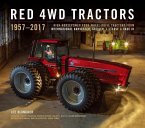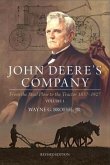"Internal Fire symbolizes the explosive release of a fuel's energy. The expansive force that it generates is transformed into productive work by a machine called an internal-combustion engine. Here is the story of how the engine came to be and the creative people whose lives were so entwined with the fruits of their labors. From gunpowder to diesel engines, these early powerplants are described in a down-to-earth manner as are the factors that shaped the course of their development. Interactions from other technologies, a consequence of patents, obtainable fuels, and a growing understanding of the very nature of heat itself, are all explored. Internal Fire is not intended as a textbook, but a well-researched and readable chronicle of a mechanical servant so strongly influencing life in the 20th and now the 21st century"--








